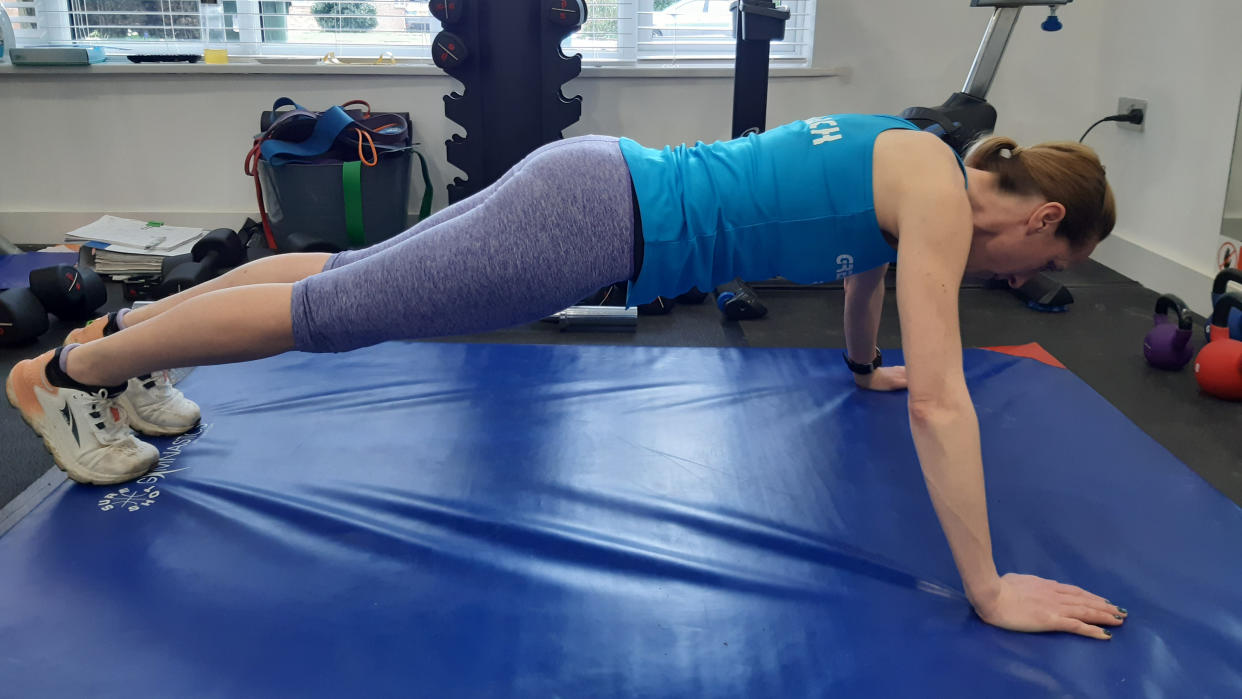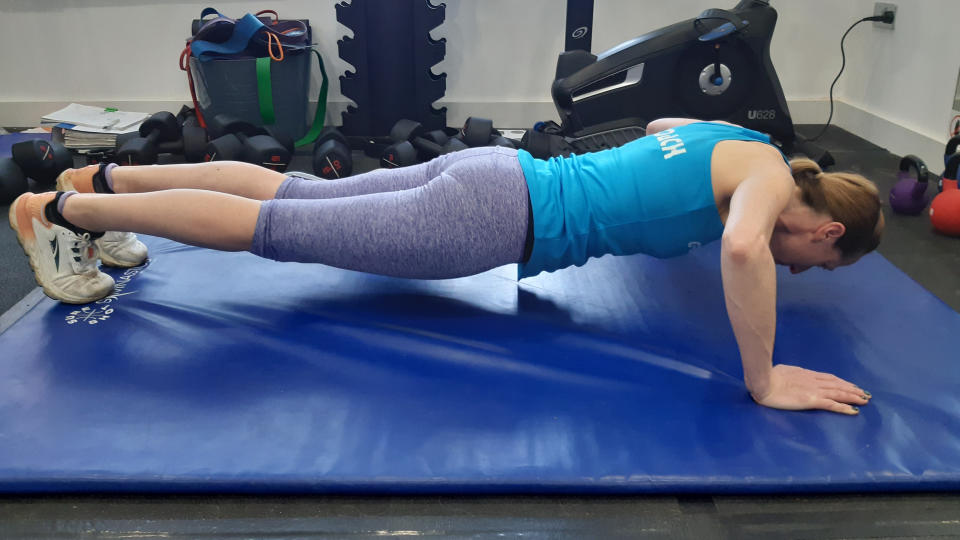I tried doing 50 push-ups a day for a month, and the results were impressive

I’m one of those annoying people who doesn't find push-ups hard. I never have, and I’ve no idea why. I don't go to the gym and I rarely do push-ups and yet, if you ask me to get down and do 10, I can.
It baffles me when other people have to do push-ups on their knees because this has never occurred to me. It does seem to be specific to push-ups, though. Ask me to do 10 burpees and I fall apart. I just can’t do them.
So, since I have this ability to do push-ups, I thought it would be interesting to explore how many I could do and what the impact would be.
The great thing about push-ups is that they can be done anywhere, with no equipment (although a yoga mat can make things more comfortable) , and there are lots of variations to try.
I found myself doing them in the bathroom while running a bath, in the kitchen while waiting for the kettle to boil, and even in the park as my kids played soccer. They’re an excellent compound exercise, working the chest, shoulders, arms and abdominal muscles simultaneously.
I set myself the target of 50 standard push-ups a day for a month. I didn't have to do these in one go, I just had to do 50 between waking up and going to bed each day. I took some time to practice my form to make sure I was doing them correctly and off I went. Here's what happened by the end of my 30-day challenge.
1. I got stronger at push-ups
I may have started from a solid base but that didn't mean I could suddenly pump out 50 push-ups in one go. I started by doing five sets of 10 with a short rest in between. This took about five minutes and was easier at the beginning of the day.
By the fourth day my chest was hurting, as the delayed-onset muscle soreness (DOMS) set in and my pectoral muscles were tender to touch. My body adjusted fairly quickly and by day five I could do 20 push-ups in one go, rest, another 15, rest, another 10, rest, and a final five.
The soreness stopped by the end of the first week and things progressed from there. By the end of the second week I was doing 25 push-ups at once. I found it easier to do 25 in the morning and 25 in the evening but I could tell that my strength was building. I also felt my form was getting better and I maintained a stronger, more stable posture—and the push-ups got quicker.
Doing the push-ups after a long or hard run was tricky and I realized rest and recovery between push-ups was as vital as rest between runs. In fact, one day I forgot to do the push-ups and it was the next day that I increased from 20 to 25 in one go with no difficulty.

As the weeks went by, my initial quick progress started to tail off and I got niggles in my neck—probably from straining too hard. By the end of week three I reached 30 push-ups in one go, yet my progress had pretty much ground to a halt.
By the end of the month my best effort was 34 at once, followed by a further 16 after a rest. I found the routine addictive and even after the challenge was complete I carried on. Two weeks later, I'm still stuck at 34. I can knock out 20 push-ups quickly but the last 14 are a grind.
I put part of this down to the fact that my weekly mileage is currently around 75 miles, which leaves little energy left for improving my push-up strength. I am curious to see if I can eventually reach 50 in one go, though.
2. I built muscle
I didn't set out to build muscle on this challenge, but I thought it would be interesting to see how push-ups might change my body composition.
At the beginning of the challenge I measured my biceps, which are pretty measly given that I am a “bag of bones” long-distance runner—as my husband affectionately calls me. I also measured my torso to see if my pectoral muscles would grow.
Both did increase. My left and right bicep increased by 6mm and my chest expanded by 2.5cm. I completed a canicross race (running with a dog) at the end of the challenge and was surprised at how defined by upper arms looked in the photos.So, push-ups seem to be an effective bodyweight arm workout.
3. My core got stronger
Push-ups begin in the plank position, an exercise that is well known for developing your core muscle and strengthening your midsection, but when you are doing a push-up it feels like your arms are doing all the work.
Actually, the abdominal muscles are working hard to protect your lower back and keep your body stable. The biggest surprise to me at the end of the challenge was the impact on my abs.
I had more definition and felt stronger running, particularly when engaging my core while running uphill. I also managed to achieve a parkrun personal record, coming in at less than 23 minutes.
I’m going to continue incorporating push-ups into my daily routine, although I will include a couple of rest days a week to allow adaptation to take place. And, who knows, maybe I'll reach that golden 50!

